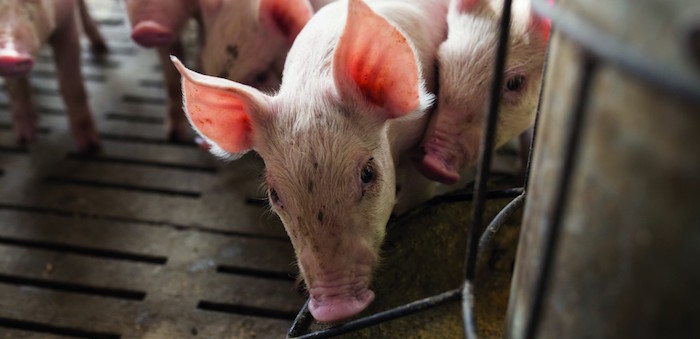The use of Processed Animal Protein (PAP) as a sustainable feed ingredient for pigs and poultry should be legalised in the UK, as it is in the EU, according to the NPA’s Pig Industry Group.
However, the NPA has stressed that a number of significant barriers would need to be overcome before PAP could be used in practice in the UK pig sector, including the logistics of the production process, the cost and the willingness of the supply chain and public to accept it.
PAP is now legal in the EU, enabling pig producers to include poultry protein in pig feed, under strict conditions, and vice versa. However, addressing the NPA’s latest Pig Industry Group (PIG) meeting in December, at which the association’s position on PAP was discussed, NPA chief executive Lizzie Wilson stressed that usage of pig PAP on EU poultry farms predominantly, remains ‘very low’.
While around 1.3 million tonnes of pig and poultry PAP is produced annually, about 780,000t goes into fish and pet food, with most of the remainder, about 500,000t, exported to third countries.
She explained how the conditions attached to use, including single species processes ‘from end to end’, in both milling and transport, to guarantee pig PAP can’t be fed to pigs and the same for poultry, allied with a bureaucratic registration process and the sheer costs involved have so far deterred any serious investment in the process.
However, the attractions of PAP as a sustainable alternative protein that could ultimately help lower our environmental impact and pig feed costs, and offer new markets for pig products, while also playing an important role in reducing food waste, should not be dismissed, she said.
As the UK Government considers its position, as the Brexit Freedoms Bill moves through Parliament, Ms Wilson said: “We believe that GB producers deserve the same opportunities as EU producers, so we support a policy which would allow the feeding of pig PAP to poultry and vice versa, provided it is properly regulated.”
She explained that the requirement for traceability poses a challenge to any change in policy because most UK pig feed production sites are cross-sector, which would make demonstrating that there is no crossover more challenging than having a single species feed production facility.
In addition to PAP being legally permitted and properly regulated, it would need to be accepted by retailers and consumers, if is ever to become a viable option.
PIG discussed the need to gauge the sentiments of the supply chain and consumers and to ensure consistency in approach among retailers before any serious attempt to use it is made. Changes to assurance schemes like Red Tractor and RSPCA Assured would also be needed, and there would need to be clarity on how feeding PAP would impact on the international pork trade, while imported product would need to abide by the same ruling as in GB.
While a number of questions were raised about the potential use of PAP, there was consensus among PIG about the NPA’s approach to push for legalisation, accompanied by strict controls, while acknowledging the various barriers to be overcome.
“If it is accepted by the supply chain and it saves cost and is more sustainable, then I would be open to using it. It can only be a good thing. But we need to make sure the supply chain and our customers are comfortable with it and that it is practical for suppliers to produce it,” one producer member said, sentiments echoed across the group.




